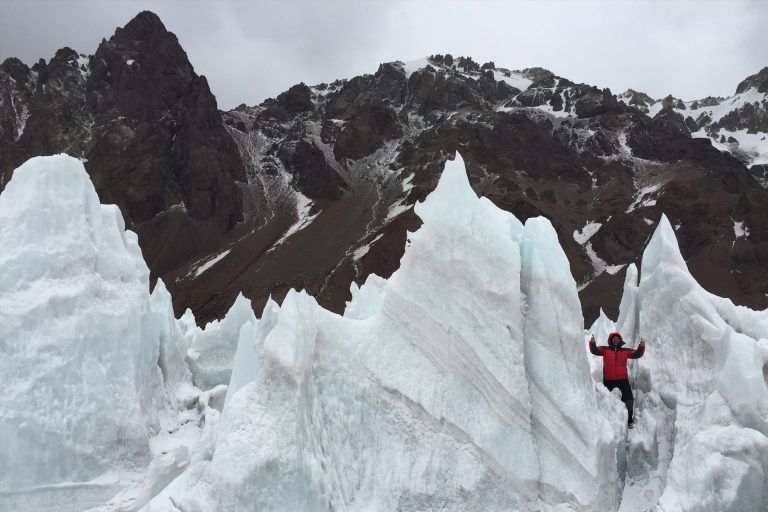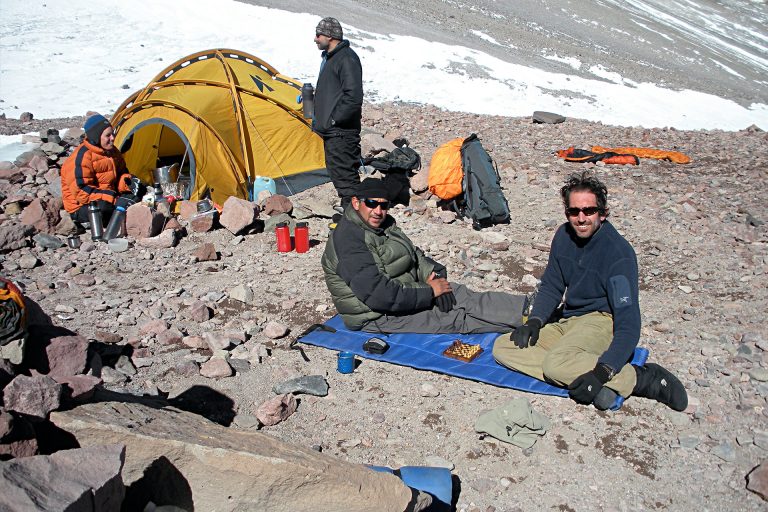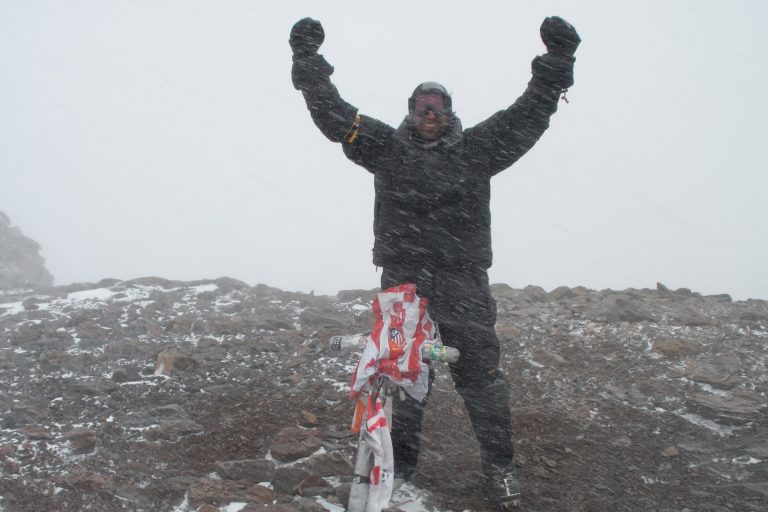Aconcagua Expedition
Description
This is a true expedition to an almost 7,000 meter peak. It is fashioned in the way Himalayan expeditions are done, and will give you a feel for a true multi-day altitude adventure.
You will also get to see two sides of the mountain, thus becoming acquainted with the most famous routes of Aconcagua, “The Stone Sentinel” in the aymará language, America’s highest peak.
In order to participate in this expedition, you should have experience in mountains higher than 5,000 meters. You must be in top physical condition, particularly on the aerobic side.
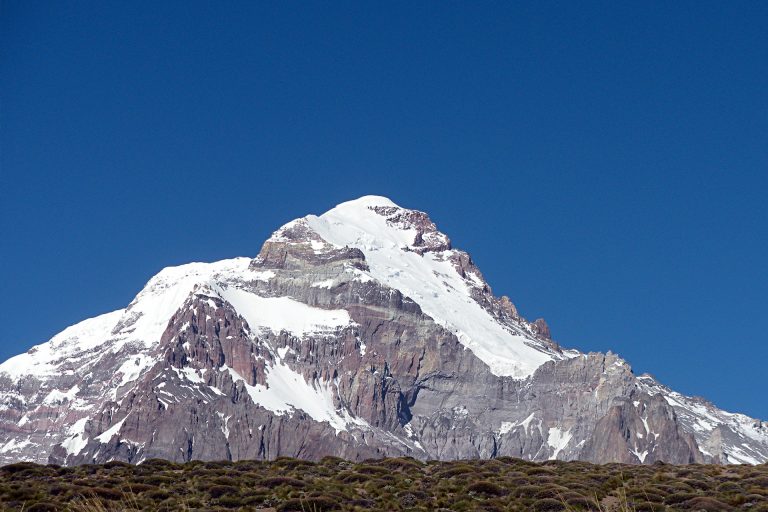
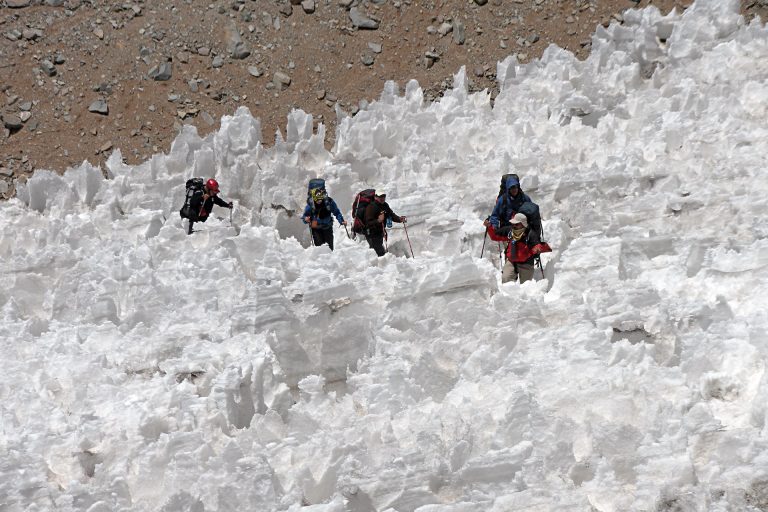



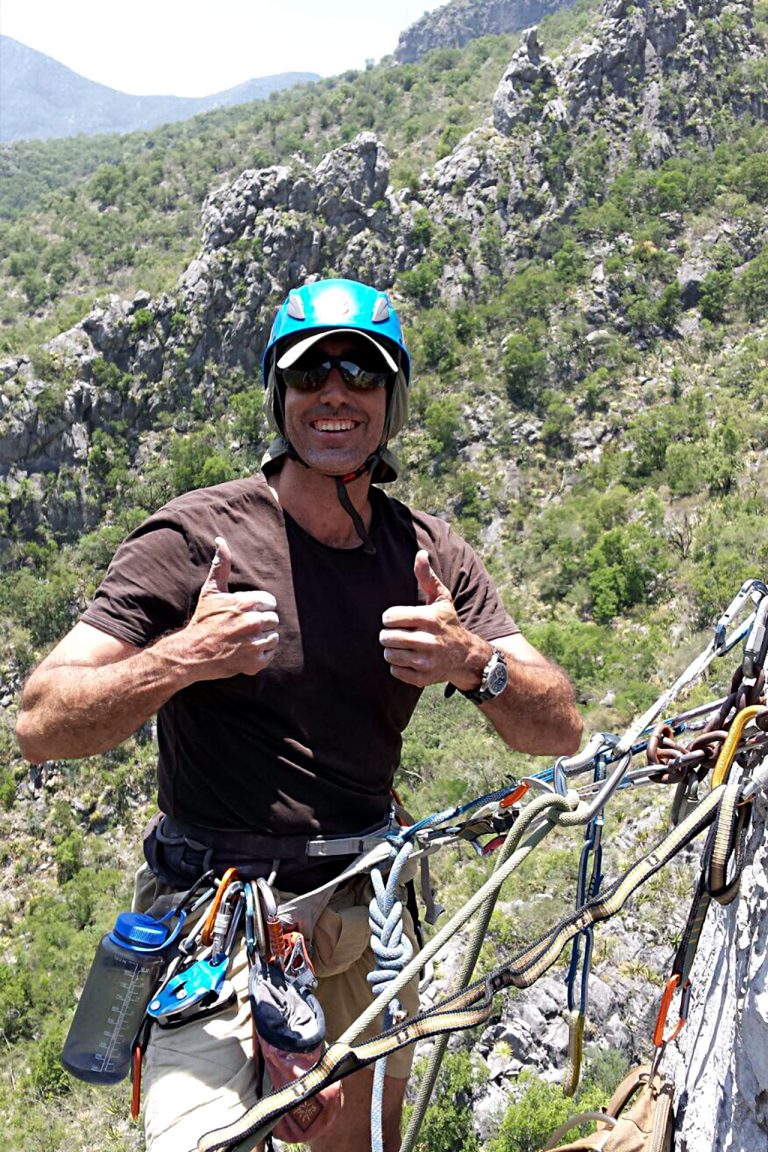
Itinerary
Arrive in Mendoza, Argentina. For most people, the easiest way is to fly into Santiago de Chile, then ride a bus across the border to Mendoza.
Get our permits and drive to the town of Penitentes. Here we organize our mule loads with our service provider, and have dinner at the hotel.
We drive to Punta de Vacas (2,400 meters) and start our three-day trek to Plaza Argentina (4,200 meters), our Base Camp for this expedition, about 30 miles away from Punta de Vacas.
The nice thing about this trek, besides the amazing scenery, is that mules carry our gear, so we enjoy the long walk with just daily packs, taking pictures right and left.
On the second day we will have the first look at our goal: mighty Aconcagua’ east face. On the third day we’ll complete our approach to Plaza Argentina.
A rest day, or “active rest”, as we say in Mexico. We go through a medical check with the Camp’s doctor (that is mandatory). We organize our loads for the days to come. We can either lay back or go out exploring the terrain. In both cases we improve our acclimatization.
We carry half of our loads (“porteo” in Spanish) to Camp I (5,200 meters), and return to Base Camp. We will repeat this process with the next altitude camps. This will make the carrying easier and favour the necessary acclimatization. We will get the “green light” from the Camp doctor to leave tomorrow, as prescribed by Argentinian law.
Power breakfast, and hike up to Camp I.
We carry half of our loads to Camp II (5,800 meters), mostly food, gas, and stuff we won’t need during the night. This camp is situated at the so called Ameghino Col. Ameghino Camp provides a spectacular view of the Polish Glacier.
Rest day at Camp I. We may hike without loads to the Ameghino ridge, or just stay in the tents drinking tea, eating, napping, and playing chess.
We move to Camp II,. We set up our tents, prepare our dinner and rest. First night at 5,800 meters; this would only be base camp at Everest!!
We carry half the weight to Camp III (6,300 meters) and return to Camp II.
Move to Camp III. The going gets harder as we gain altitude!
Rest and acclimatization at Camp III. We'll monitor the weather to plan for the best summit day available.
Summit day!! We leave camp at 8 a.m. and climb to Refugio Independencia at approximately 6,500 meters. We go across the West Face and climb up the infamous Canaleta, an apparently unending 300 meter couloir that leads to the summit ridge. We are at the Guanaco Ridge, an easy traverse to the summit, the highest point in the Americas!!! From the top you see the Andes Mountains, plenty of “six-thousanders”, such as the Mercedario, in Chile.
We descend to Plaza de Mulas (the Base Camp on the west side of the mountain). It’s a long day, as we go down almost 2,000 meters, carrying all the gear on our backs. At Base Camp we enjoy a well deserved dinner, and see the sun set on Aconcagua's summit. You can even have a shower for 30 Dollars!!
We trek from Plaza de Mulas to the Horcones visitor center., again with light packs, as the mules carry our heavy stuff. We follow the Horcones River, and enjoy a new perspective of Aconcagua’s South Face.
We stop at Confluencia camp for a hearty meal, and push forward to the Horcones visitor center. We’ll be driven back to Mendoza, stopping on the route for our celebration dinner.
These are “reserve” days, in case the weather or our own acclimatization require it. If we don’t need them, let’s burn them in lovely Mendoza, regaining our strength with meals and Malbec wine.
We fly back. Congratulations!
Equipment list
- Plastic Double boots (or equivalent)
- Trail running shoes
- Sock Liners
- Wool or synthetic thick mountaineering socks
- Gaiters
- Lightweight underwear, tops and bottom
- Expedition weight underwear, tops and bottom
- Shorts
- T-shirts
- Insulating layers, i.e. fleece vest and fleece jacket
- Fleece pants or wind proof climbing pants
- Pants windproof, waterproof and breathable (preferably Gore Tex)
- Gore Tex parka
- Hooded down jacket
- Balaclava
- Sun Hat
- Mountaineering gloves
- Mittens
- Glacier Glasses or sunglasses with side shields
- Storm Goggles
- Down boots for high altitude camps
- Clothes for wearing off the mountain (4 days)
- Mountaineering Ice Axe
- Crampons
- Trekking Poles
- Head lamp and replacement batteries
- Sunscreen and Lip balm (SPF 30 as a minimum)
- First Aid Kit
- Reading material, and/or small portable chess set
- Camera and extra battery
- Backpack (80 litres minimum)
- Duffel bags (with locks)
- 3 Bottles of water of a liter
- toothbrush/toothpaste and toiletries, including hand sanitizer
- sleeping bag rated –5º C or lower
- 2 One-litter wide mouth water bottles-VERY IMPORTANT! Make sure to bring bottles for our hikes above base camp)
- Cup, bowl and spoon
- Plastic bags of various sizes (some ziplocks and others garbage)
- Drinking tablets
- "Bottle of urine" (highly recommended)
